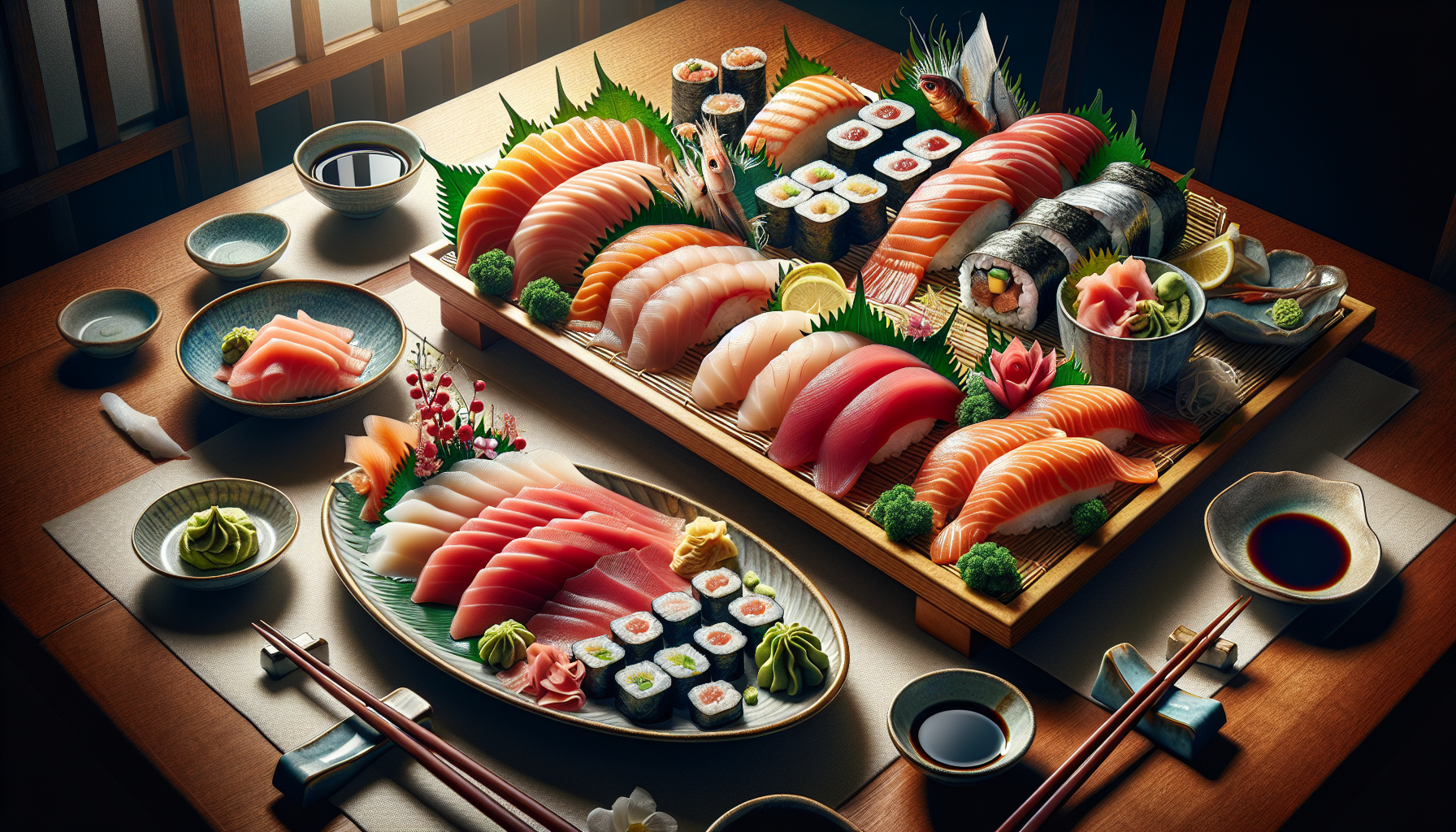Advertisements
If you’re a fan of Japanese cuisine, you’ve probably already wondered: sashimi or sushi? Both dishes are extremely popular and delicious, but do you know exactly what the differences are between them and in which situation it’s better to choose one or the other? In this article, we’ll explain in detail the characteristics of each and help you choose the best option according to your preferences and needs.
Sashimi is a dish made up of thin slices of raw fish, usually served with soy sauce, wasabi and pickled ginger. Sushi, on the other hand, is a combination of rice seasoned with vinegar, sugar and salt, topped with raw fish, vegetables or seafood. Both dishes are true works of culinary art, but it is important to know the difference between them in order to enjoy them at their best.
When it comes to choosing between sashimi and sushi, it’s important to consider the freshness of the ingredients, your taste buds, and your personal preferences. If you’re a fan of more intense flavors and different textures, sashimi might be the ideal choice. If you prefer a balanced combination of flavors and textures, sushi might be the best option.
Advertisements
Differences Between Sashimi and Sushi
What is Sashimi?
Sashimi is a Japanese delicacy consisting of thin slices of raw fish, usually served with soy sauce, wasabi and pickled ginger. It is important to note that sashimi does not include rice, with the fish being the star of the dish.
- Sashimi is ideal for lovers of seafood and fresh fish, as it allows you to savor the pure, fresh flavor of the fish.
- It's a lighter, healthier option as it doesn't include rice, making it a lower-calorie, lower-carb choice.
- To enjoy sashimi at its best, it is important to choose fresh, high-quality fish.
What is Sushi?
Sushi is a Japanese dish consisting of rice seasoned with rice vinegar, combined with raw fish, seafood, vegetables or omelet, and wrapped in seaweed. Unlike sashimi, sushi combines rice with other ingredients.
- Sushi is a more versatile option, as it allows for varied combinations of ingredients and flavors.
- It is a more substantial option, due to the presence of rice, which provides carbohydrates and helps to satisfy hunger.
- Sushi can be consumed in both traditional versions, such as nigiri and makizushi, and in more modern options, such as temaki and uramaki.
When to choose Sashimi or Sushi?
Choose Sashimi when:
- You want to enjoy the pure, fresh flavor of the fish.
- Are you looking for a lighter, healthier option?
- Want to try different types of high quality fresh fish.
Choose Sushi when:
- You want a more substantial option that includes carbohydrates and helps satisfy hunger.
- Want to try different combinations of ingredients and flavors?
- It is open to different styles and presentations of the dish.

Furthermore, it is important to mention that both sashimi and sushi are dishes that provide a unique sensory experience, exploring not only the flavors, but also the textures and aromas of the ingredients. The lightness of the fresh fish in sashimi, cut with precision, and the perfect combination of vinegar, rice and fish in sushi create a harmony that transcends simple eating. The Japanese technique, with its attention to detail and balance, ensures that each dish is prepared in a way that highlights the natural characteristics of the ingredients, guaranteeing an exceptional gastronomic experience.
Advertisements
In the case of sashimi, the freshness of the fish is paramount, and the delicacy with which it is sliced, often at the exact thickness that best preserves its flavor and texture, is what makes each piece a work of art. Sushi, on the other hand, is a symbiosis between the rice, which must be perfectly seasoned and shaped, and the fish, which must be carefully selected and served at the ideal temperature to optimize its flavor.
The Japanese tradition of preparing these dishes reflects a deep connection with nature and respect for the ingredients. When you taste sushi or sashimi, you can perceive the balance between sweet, salty and umami, a characteristic flavor of Japanese cuisine. More than just eating, when you eat these dishes, you experience a piece of Japanese culture, where cooking has become an art form and cultural expression.
So when you enjoy a good sashimi or sushi, you’re not just enjoying a delicious meal, you’re also immersing yourself in a rich, ancient culture, full of nuances and details that make every bite a true gastronomic celebration. Each dish tells a story, connecting you with centuries of Japanese culinary tradition, elevating the simple act of eating into a profound, unforgettable and meaningful experience.
Conclusion
In short, the differences between sashimi and sushi are clear: sashimi consists of thin slices of raw fish, without the presence of rice, while sushi combines rice seasoned with rice vinegar and other ingredients, wrapped in seaweed. Sashimi is ideal for those looking to savor the pure and fresh flavor of fish, in addition to being a lighter and healthier option, ideal for seafood lovers. On the other hand, sushi is more versatile, allowing for varied combinations of ingredients and presentations, being a more substantial option due to the presence of rice, which provides carbohydrates and helps to satisfy hunger.
So, when choosing between sashimi and sushi, consider your dietary preferences and goals. Choose sashimi when you want an experience focused on the pure flavor of the fish and a lighter option, and choose sushi when you are looking for a more substantial and versatile meal that allows you to experiment with different combinations of ingredients. Regardless of your choice, both dishes are delicious Japanese cuisine options that are sure to please your palate.
Both dishes represent the excellence of Japanese cuisine, offering a unique experience, whether through the simplicity of sashimi or the complexity of sushi.




